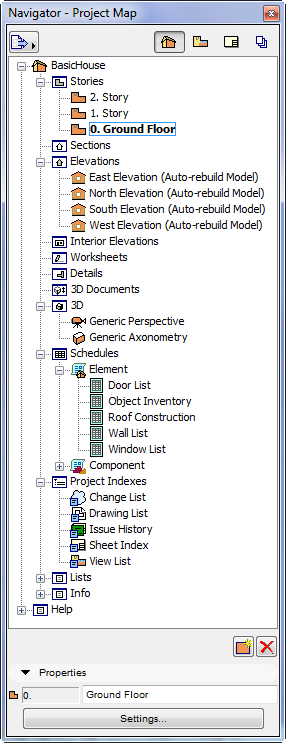
The Navigator Palette (Navigator) is a tree structure that lets you build up the entire logical structure of your project and navigate within it. You can create folders, then copy, drag and drop views and other project items depending on their particular purpose. The Navigator also lets you access views and layouts from external ArchiCAD files and place them into the Layout Book of your current project. Finally, you can configure the outputs for publication using Navigator controls.

The Navigator’s Four Maps
The Navigator displays the whole project’s tree structure in four different maps.
Use the four buttons at the top of the Navigator Palette to choose a Map.

•The Project Map provides a tree structure of the viewpoints of your Virtual Building Model. A viewpoint represents a window onto a particular part of your project, but its settings have not been saved yet.
•The View Map lists saved views. A View is a stored version of a Viewpoint; each view is defined by its adjustable View Settings that you configure for a particular purpose as you construct your Virtual Building.
See Navigator View Map.
•The Layout Book contains the layouts defined for the entire architectural project, and can contain Drawings originating from multiple ArchiCAD project files and other source files. A view placed on a Layout is called a Drawing.
See The Layout Book.
•Use the Publisher to set up the items you want to publish, and set the publishing method and format. Each Publisher item refers directly to a View or to a Layout.
See Publisher Function.
To switch from one map to another, click among the four buttons at the top of the Navigator. The palette’s title bar indicates which map is currently displayed.
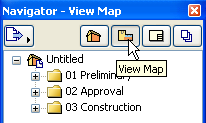
The Navigator item currently open in the window is shown in bold.
For any selected Navigator item, click the Settings button to view its settings.
The Navigator has a special double-tree view, called the Organizer, which makes it easier to move items from one map to the other. (See Organizer Palette.)
Important: Operations involving Navigator/Organizer items (such as drag and drop between Navigator maps, deleting items from a map, or adding items to the Publisher set) are not added to the undo queue, and are not undoable.
The following diagram summarizes the project workflow as reflected in the maps of the Navigator:
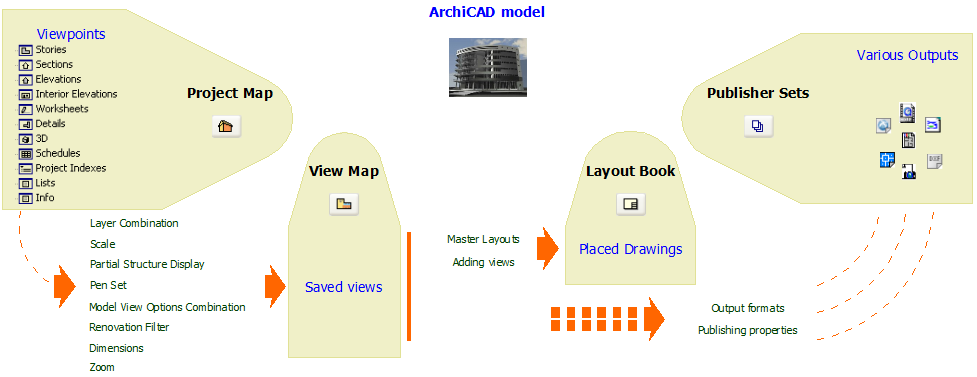
The Navigator is displayed by default.
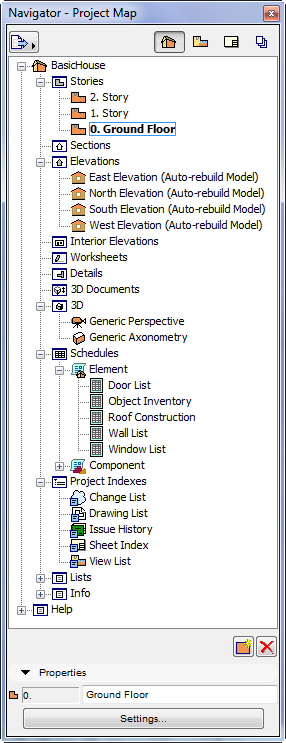
If it is hidden, choose Window > Palettes > Navigator, or click the Navigator icon from the horizontal scrollbar at the bottom of the ArchiCAD screen.
![]()
Auto-Hide the Navigator
Both Navigator and Organizer Palettes have an Auto-Hide feature: if you turn this on, you can use the Navigator/Organizer as usual, but once you click outside the palette, it will disappear.
The Auto-Hide command is found in the Navigator/Organizer palette’s context menu (right-click in the gray area at the top of either palette.)
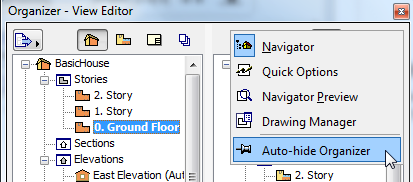
Using the Navigator to Open Project Windows
Double-click the desired item from any map of the Navigator.
By default, ArchiCAD will open the item in existing windows, replacing the previous view in that window. To open a new view in a new window instead, use the context menu command from the Navigator item to be opened.
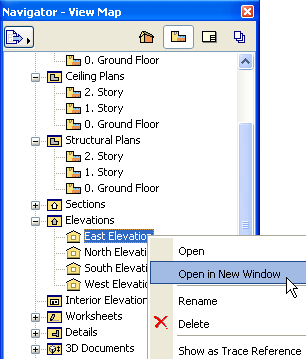
If you would rather open a new window by default each time you open an additional view or layout (from a menu or by double-clicking in the Navigator), change the window-opening default preference in Options > Work Environment > More Options.

Navigator Preview
When you click any item in the Navigator/Organizer, its preview is displayed in the Navigator Preview palette (if applicable, and if the Navigator Preview is opened).